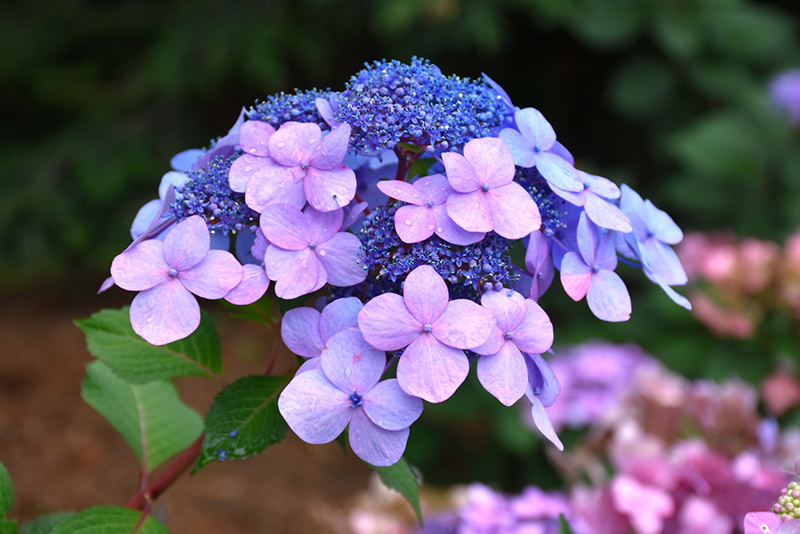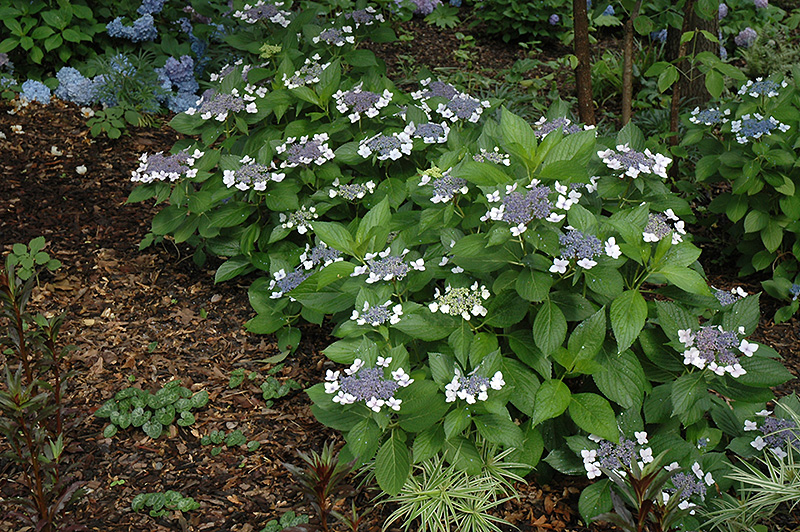>> Home
Twist And Shout Hydrangea
Hydrangea macrophylla 'PIIHM-I'
Height: 4 feet
Spread: 4 feet
Sunlight:
![]()
Hardiness Zone: 4
Other Names: French Hydrangea
Group/Class: Endless Summer
Description:
Lacy deep-pink centers are surrounded by gorgeous blossoms of pink or periwinkle blue, depending on soil type, blooms on both old and new wood all summer long; sturdy red stems, glossy deep green leaves turn red in fall to offer year-round interest
Ornamental Features
Twist And Shout Hydrangea features showy hot pink lacecap flowers with blue overtones at the ends of the branches from early summer to early fall. The flowers are excellent for cutting. It has forest green deciduous foliage. The glossy pointy leaves turn an outstanding burgundy in the fall.
Landscape Attributes
Twist And Shout Hydrangea is a multi-stemmed deciduous shrub with a more or less rounded form. Its relatively coarse texture can be used to stand it apart from other landscape plants with finer foliage.
This shrub will require occasional maintenance and upkeep, and can be pruned at anytime. It has no significant negative characteristics.
Twist And Shout Hydrangea is recommended for the following landscape applications;
- Accent
- Mass Planting
- General Garden Use
Planting & Growing
Twist And Shout Hydrangea will grow to be about 4 feet tall at maturity, with a spread of 4 feet. It tends to fill out right to the ground and therefore doesn't necessarily require facer plants in front. It grows at a fast rate, and under ideal conditions can be expected to live for approximately 20 years.
This shrub should be grown in a location with partial shade or which is shaded from the hot afternoon sun. It requires an evenly moist well-drained soil for optimal growth. It is not particular as to soil type, but has a definite preference for neutral soils. It is highly tolerant of urban pollution and will even thrive in inner city environments. Consider applying a thick mulch around the root zone in both summer and winter to conserve soil moisture and protect it in exposed locations or colder microclimates. This is a selected variety of a species not originally from North America.

